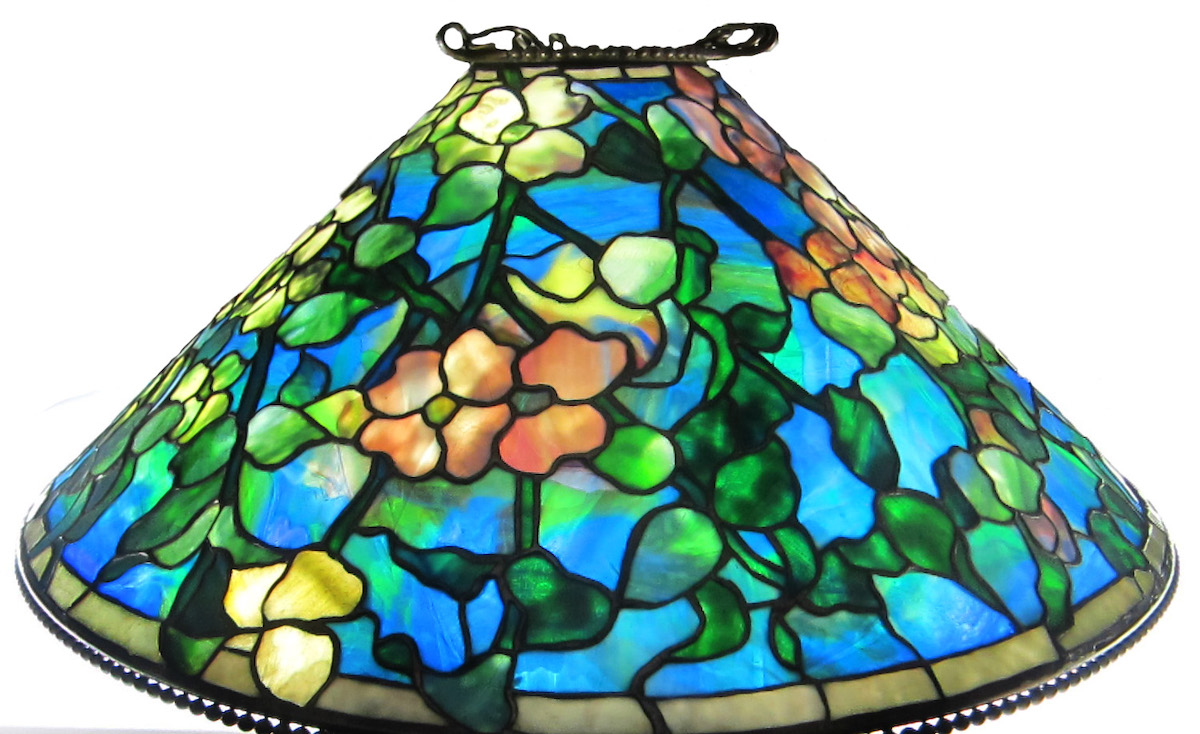Tiffany Lampshade
(Object/Artifact)

The Tiffany Lampshade was produced by Tiffany Studios around 1906 in the favrile glass technique with a pattern of dogwood blossoms and green leaves. A bronze beaded boarder encircles both the top and bottom of the lampshade. The object attaches to the ceiling with bronze hooks and chains.
Video Transcript:
Louis Comfort Tiffany born in 1848, son of Charles Tiffany, the founder of the famous jewelry company, was trained as a painter, but glass became his preferred artistic medium. He went on to become one the most prolific and inspirational glassmakers of the 19th and 20th centuries.
In the 1880s Tiffany focused on innovative methods of glass manufacturing. Traditional stained glass artists dismissed his techniques as radical. One such technique, which Tiffany called “Favrile†meaning “hand made†in French, featured brilliant iridescent colors. His work was in demand, gaining the artist international recognition.
Tiffany started his many design companies and studios beginning in 1878 with financial backing from his father and other investors. He hired specialized craftspeople, both men and women, to produce his wares. Nature was the primary inspiration for the studios’ works. Various artists created blown-glass vases, glass windows, lamps, pottery, jewelry, and more under the name of Tiffany Studios as he oversaw their work, holding it to his high standards.
Consumers purchased their pieces from Tiffany’s New York showroom, catalogs, or department stores.
The Tiffany lampshade in the McFaddin-Ward House collection was produced around 1906 and was chosen for its location in the formal dining room by the home’s original owner Di Averill, W.P.H. 's sister. Ida McFaddin later replaced the Tiffany lampshade in the 1930s or 40s with the current chandelier.